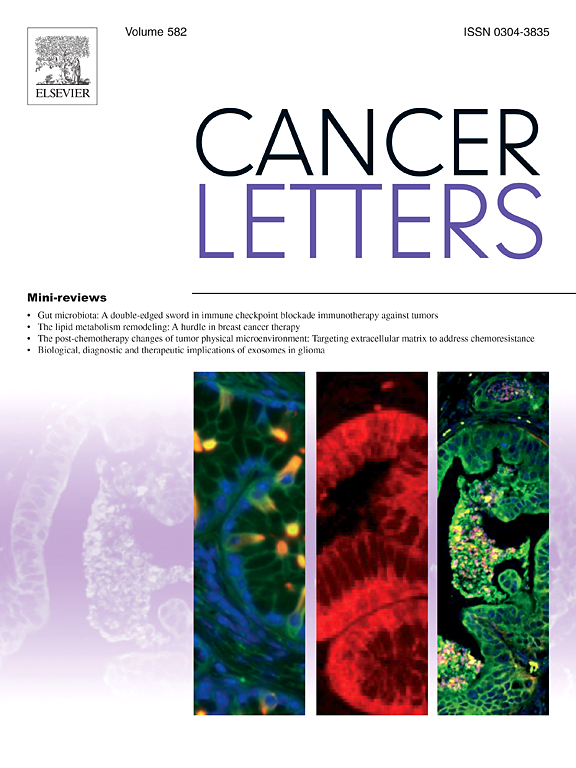Consensus on the monitoring, treatment, and prevention of leukaemia relapse after allogeneic haematopoietic stem cell transplantation in China: 2024 update
IF 9.1
1区 医学
Q1 ONCOLOGY
引用次数: 0
Abstract
The consensus in 2018 from The Chinese Society of Haematology (CSH) on the monitoring, treatment, and prevention of leukaemia relapse after allogeneic haematopoietic stem cell transplantation (HSCT) facilitated the standardization of clinical practices in China and progressive integration with the world. To integrate recent developments and further improve the consensus, a panel of experts from the CSH recently updated the following consensus: (1) integrate risk-adapted, measurable residual disease (MRD)-guided strategy on modified donor lymphocyte infusion (DLI) and interferon-α into total therapy, which was pioneered and refined by Chinese researchers; (2) provide additional evidence of the superiority of haploidentical HSCT (the dominant donor source in China) to matched HSCT for high-risk populations, especially for pre-HSCT MRD-positive patients; (3) support the rapid progress of techniques for MRD detection, such as next-generation sequencing (NGS) and leukaemia stem cell-based MRD detection; and (4) address the role of new targeted options in transplant settings. In conclusion, the establishment of a “total therapy” strategy represents a great step forward. We hope that the consensus updated by Chinese scholars will include the latest cutting-edge developments and inspire progress in post-HSCT relapse management.
中国异基因造血干细胞移植后白血病复发的监测、治疗和预防共识:2024 年更新版》。
2018年,中华医学会血液学分会(CSH)就异基因造血干细胞移植(HSCT)后白血病复发的监测、治疗和预防达成共识,促进了我国临床实践的规范化,并逐步与世界接轨。为结合最新进展,进一步完善共识,近日,中国造血干细胞中心专家组更新了以下共识:(1)将中国研究人员首创并完善的风险适应性、可测量残留疾病(MRD)指导下的改良供者淋巴细胞输注(DLI)和干扰素-α策略纳入总体治疗;(2)提供更多证据,证明对于高危人群,尤其是造血干细胞移植前MRD阳性患者,单倍体造血干细胞移植(中国最主要的供者来源)优于配型造血干细胞移植;(3) 支持 MRD 检测技术的快速发展,如下一代测序(NGS)和基于白血病干细胞的 MRD 检测;以及 (4) 解决新靶向方案在移植环境中的作用问题。总之,"整体治疗 "策略的确立是向前迈出的一大步。我们希望,中国学者更新的共识将包括最新的前沿进展,并激励造血干细胞移植后复发管理取得进展。
本文章由计算机程序翻译,如有差异,请以英文原文为准。
求助全文
约1分钟内获得全文
求助全文
来源期刊

Cancer letters
医学-肿瘤学
CiteScore
17.70
自引率
2.10%
发文量
427
审稿时长
15 days
期刊介绍:
Cancer Letters is a reputable international journal that serves as a platform for significant and original contributions in cancer research. The journal welcomes both full-length articles and Mini Reviews in the wide-ranging field of basic and translational oncology. Furthermore, it frequently presents Special Issues that shed light on current and topical areas in cancer research.
Cancer Letters is highly interested in various fundamental aspects that can cater to a diverse readership. These areas include the molecular genetics and cell biology of cancer, radiation biology, molecular pathology, hormones and cancer, viral oncology, metastasis, and chemoprevention. The journal actively focuses on experimental therapeutics, particularly the advancement of targeted therapies for personalized cancer medicine, such as metronomic chemotherapy.
By publishing groundbreaking research and promoting advancements in cancer treatments, Cancer Letters aims to actively contribute to the fight against cancer and the improvement of patient outcomes.
 求助内容:
求助内容: 应助结果提醒方式:
应助结果提醒方式:


